This post contains affiliate links, which means I may earn a commission if you purchase through those links (at no extra cost to you).
Learn how to make Clarified Butter, an easy process that removes the water and milk solids from whole butter. Clarified butter has a more concentrated, richer flavor, lasts longer in the refrigerator, and has a higher smoke point for cooking.
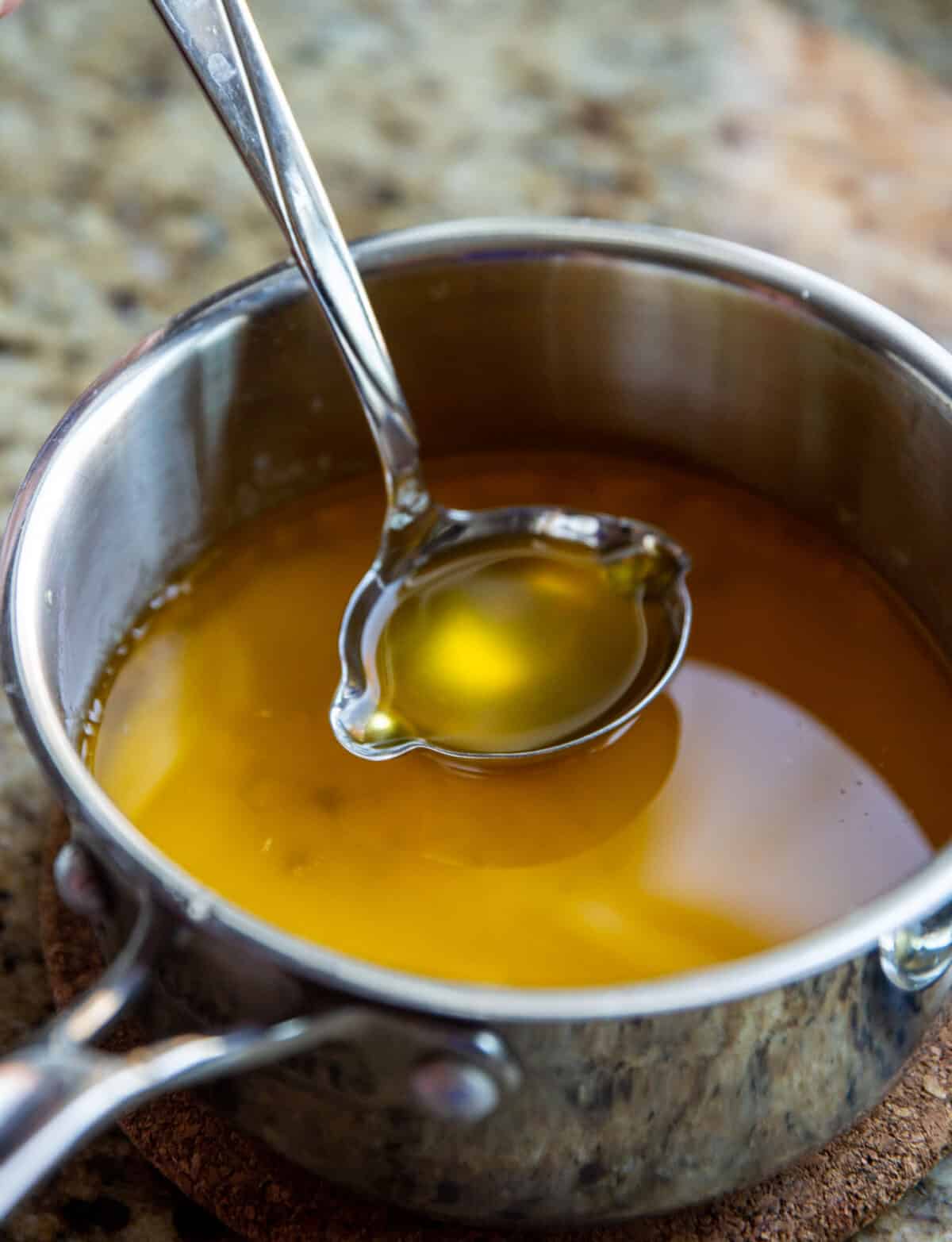
Meggan’s notes
When you make clarified butter, you skim milk solids off the top of melted butter and leave the released water in the bottom of the pan. The stuff in the middle, the liquid gold, is 100% pure butterfat.
This means a higher smoke point, a longer shelf life, a rich buttery flavor, and a more versatile substance great for making everything from stir-fries to sauces.
This recipe is not for Ghee, a specific type of clarified butter that is shelf-stable at room temperature, although I cover the differences and how to make it in the FAQ section.
Table of Contents
Recipe ingredients

At a Glance: Here is a quick snapshot of what ingredients are in this recipe.
Please see the recipe card below for specific quantities.
Ingredient notes
- Better butter: The best butter for clarifying is European-style, imported butter. These butters usually contain more milk fat than American butter (82% to 86% milk fat in European vs. 80% to 82% in American). After clarifying some store-brand or other inexpensive butters, I was left with what looked like a pan of yellow water. Not appetizing! If you are clarifying butter to make a delicious Hollandaise Sauce, choose a delicious butter (since Hollandaise Sauce is mostly butter). But, If you’re clarifying butter to make a stir-fry, the quality won’t be quite as important.
- Butter solids: You can lightly brown the butter solids (the layer you scooped off the top) in a small amount of clarified butter to make “browned butter.” Then, add to cookies, vegetables, soups, and mashed potatoes for extra butter flavor, or use as a condiment on bread.
Step-by-step instructions
- In a small saucepan over low heat, warm butter without boiling or agitation of any kind. As the butter melts, the solids rise to the top, and water sinks to the bottom. Sometimes the solids appear to bubble up from the bottom.
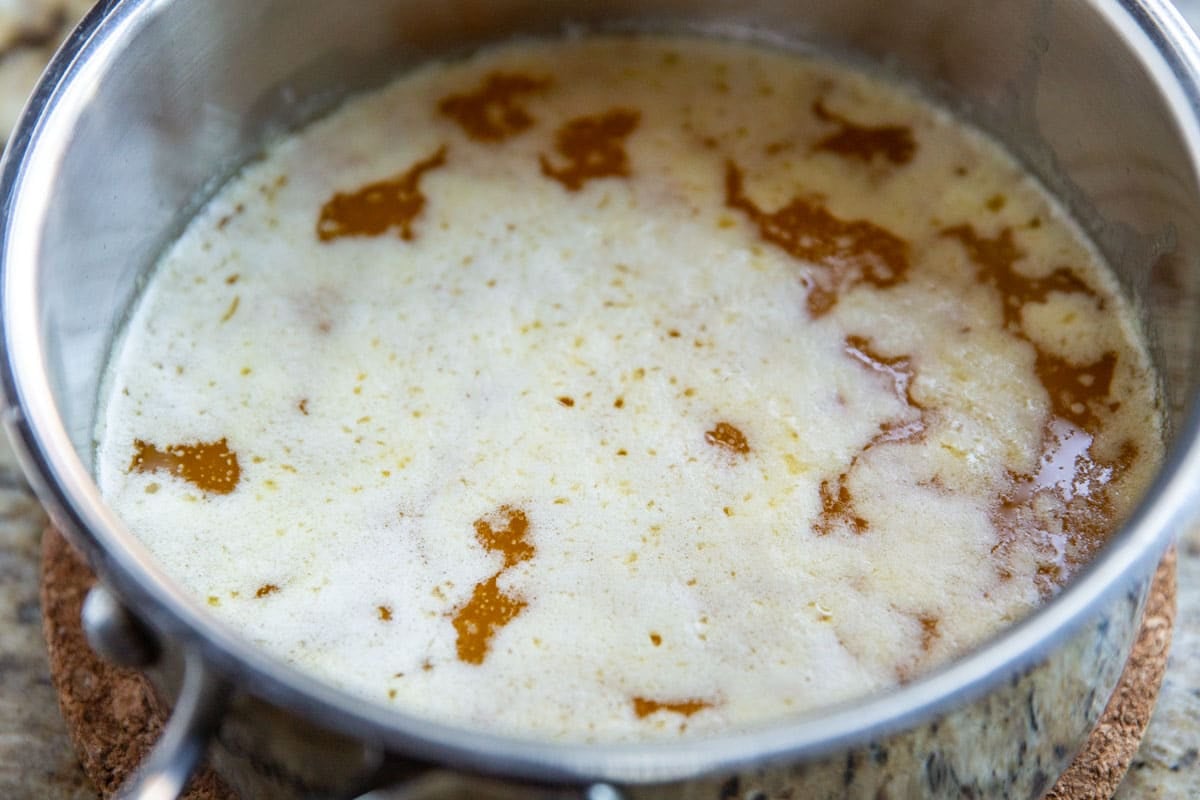
- When the butter is melted, skim the milk solids from the top using a ladle or slotted spoon (see notes for ideas of what to do with the solids).
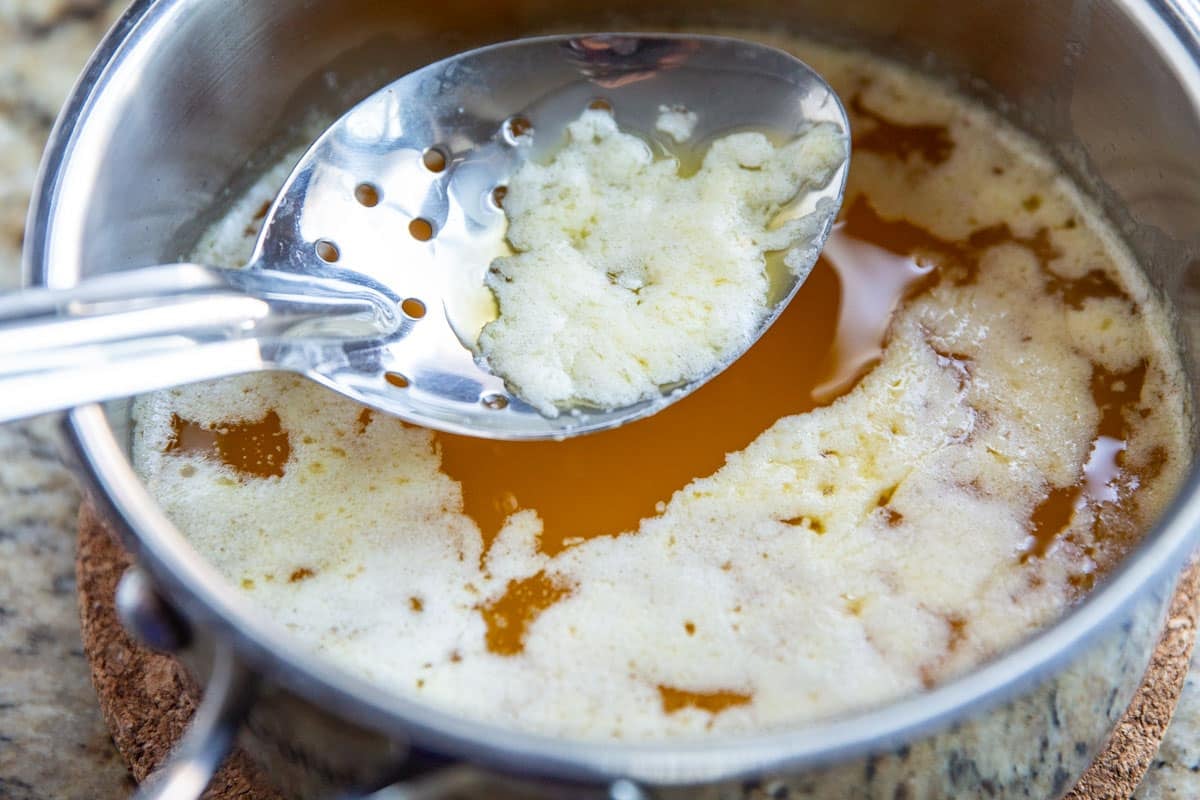
- When the skim solids have been removed, transfer the butterfat to a clean saucepan, bowl, or jar using a ladle. Leave the water in the bottom of the pot.
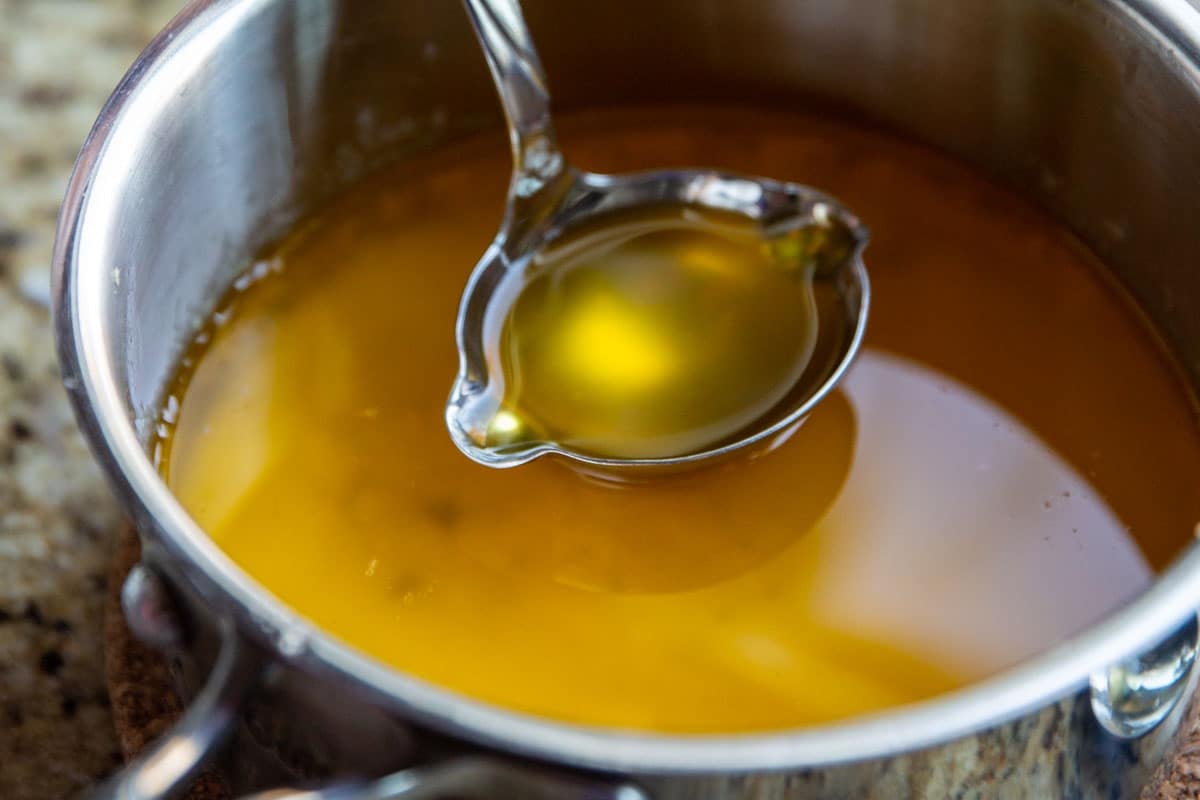
Recipe tips and variations
- Yield: 1 pound of butter yields about 12 ounces of clarified butter, enough for 8 servings, 1 ½ ounces (3 tablespoons) each.
- Storage: Store clarified butter in a jar the fridge for up to 2 months.
- Freezer: Pack in a freezer-safe container, label, date, and freeze clarified butter for up to 6 months.
- No slotted spoon: Strain your solids away with cheesecloth, a fine-mesh sieve, or fine-mesh strainer.
- Flavors: Add fresh garlic, herbs, and spices to your clarified butter. See Compound Butter 6 Ways for delicious flavor combinations for butter.
- Serving suggestions: Drizzle hot clarified butter over your next New York Strip Steak, Roast Beef Tenderloin, or Steak and Lobster for extra richness. Or, try on pancakes, crab legs, and roasted vegetables (especially potatoes). Clarified butter is also an ingredient in some Hollandaise recipes.
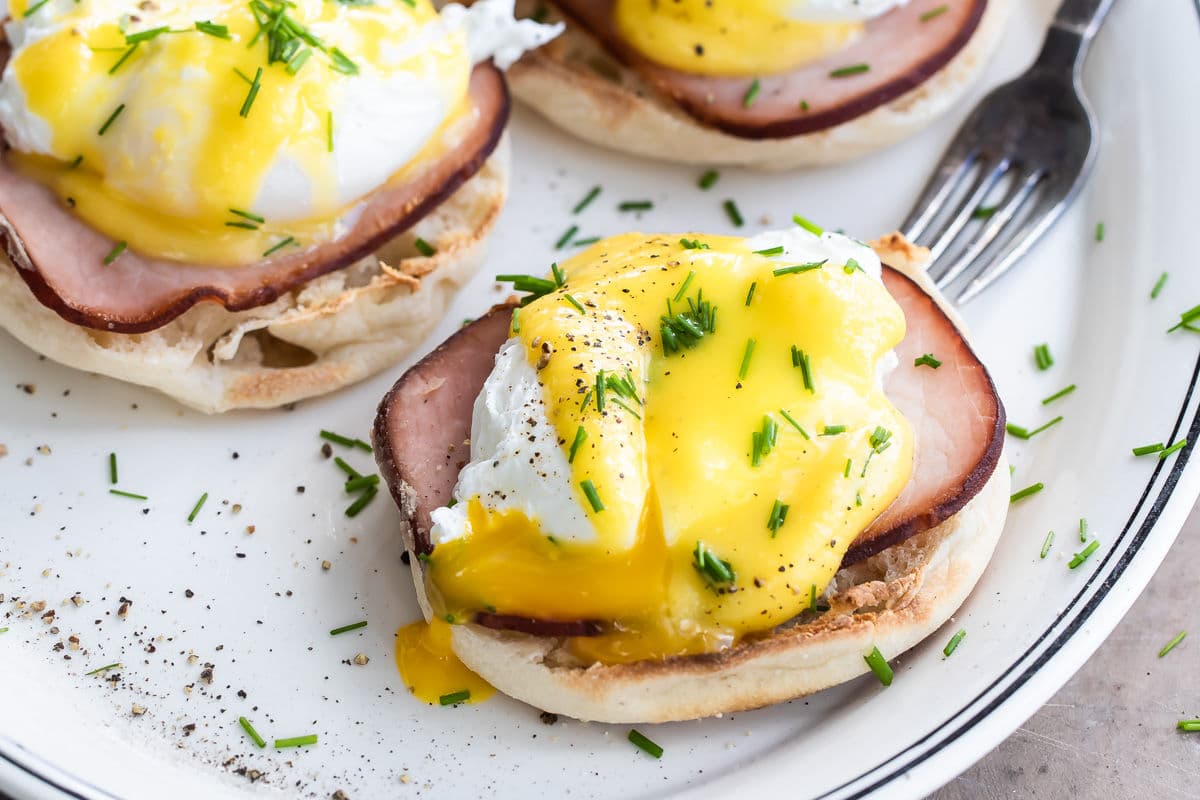
Frequently Asked Questions
Clarified butter and ghee are almost the same thing. They are both regular butter with the milk and water solids removed (leave pure butterfat). Ghee is a particular type of clarified butter normally used in Indian cooking.
Clarified butter is often made by melting butter, skimming off the foam, and leaving the water in the bottom of the pan. Ghee, however, is boiled rapidly over medium-high heat until the water in the butter bubbles and actually boils off, and the milk proteins brown. You strain the ghee to remove the milk solids, and the resulting butterfat, ghee, is pure and can be stored at room temperature for up to 3 months or 1 year in the refrigerator.
Because clarified butter is pure butterfat, it has a high smoke point (about 450 degrees) compared to regular butter (about 350 degrees).
The clarified butter method in this recipe does not produce shelf-stable butter and must be kept in the refrigerator. Ghee, which has been boiled for at least 10 minutes to remove the water, and then strained to completely remove all milk solids, is the shelf-stable version for up to 3 months or can be refrigerated for up to 1 year.
More ways to enjoy clarified butter
Beef Recipes
Best Beef Tenderloin Roast Recipe
Main Dishes
Surf and Turf
Mexican Recipes
Best Steak Fajita Recipe
Beef Recipes
Grilled Beef Tri Tip
Join Us
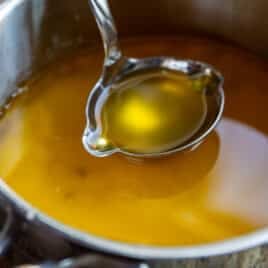
Clarified Butter
Ingredients
- 1 pound unsalted butter
Instructions
- In a small saucepan over low heat, warm butter without boiling or agitation of any kind.
- As the butter melts, the solids rise to the top and water sinks to the bottom. Sometimes the solids appear to bubble up from the bottom.
- When the butter is melted, skim the milk solids from the top using a ladle or slotted spoon (see notes for ideas of what to do with the solids).
- When the skim solids have been removed, transfer the butterfat to a clean saucepan or bowl using a ladle. Leave the water in the bottom of the original saucepan.
Recipe Video
Notes
- Better butter: The best butter for clarifying is European-style, imported butter. These butters usually contain more milk fat than American butter (82% to 86% milk fat in European vs. 80% to 82% in American). After clarifying some store-brand or other inexpensive butters, I was left with what looked like a pan of yellow water. Not appetizing! If you are clarifying butter to make a delicious Hollandaise Sauce, choose a delicious butter (since Hollandaise Sauce is mostly butter). But If you’re clarifying butter to make a stir-fry, the quality won’t be quite as important.
- Butter solids: You can lightly brown the butter solids (the layer you scooped off the top) in a small amount of clarified butter to make “browned butter.” Then, add to cookies, vegetables, soups, mashed potatoes for extra butter flavor, or use as a condiment on bread.
- Yield: 1 pound of butter yields about 12 oz. of clarified butter, enough for 8 servings, 1 ½ oz. (3 Tbsp.) each.
- Storage: Store clarified butter in the refrigerator for up to 2 months.
- Freezer: Pack in a freezer-safe container, label, date, and freeze clarified butter for up to 6 months.


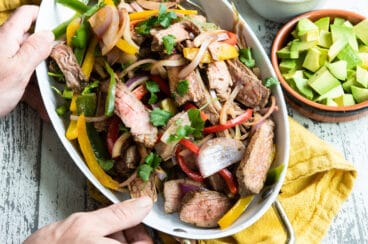
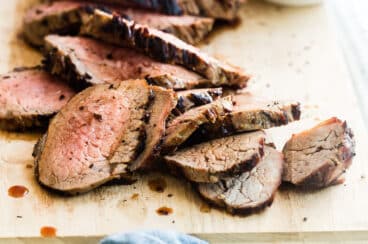
Well, I’m so confused! I used Kerrygold butter (that’s what your pic looked like you were using)…that’s the only thing I did different from last year and I’m not getting anything on the top to skim off. There’s a TINY bit but really nothing much. I didn’t let it boil and I didn’t stir it so I don’t know what went wrong?? I’m trying to make clarified butter for a lobster party tomorrow night. Any ideas??
Hi Kelly, I’m sorry the butter is giving you so much trouble! I think your heat may not be high enough, while you don’t want the butter to boil and disperse the milk solids, it does need to be high enough for the butter to separate out the water and the solids from the fat. A lobster party sounds AMAZING! – Meggan
Thanks, Meggan for sharing such great information with us. There are many who don’t have a basic idea about what is the difference between ghee and clarified butter. I think your blog is going to help them a lot. Here you have used European style butter, but I think grass-fed butter which has been procured from 100% grass-fed cow’s milk will make better quality clarified butter. I personally prefer using such kinds of butter for making ghee at home. Recently I was reading a blog regarding what is clarified butter ghee, and I would love to share the information with you as well.
Thank You! I appreciate that you are sharing your skill. I cannot afford Culinary School, therefore I’m grateful to find good quality sharing.
I was researching clarified butter because I’m teaching my 7 year old grand daughter the basics of cooking. I want to make this with her. Your website explained everything fully and I am so grateful. You even have a video I can show her. My goal is for her to be able to fix dinner and desert for a family of 5 all by herself by the time she is 10 years old. We are approaching this from a scientific, or chemistry, awareness; why ingredients react the way they do when combined. I want her to know WHY she must do things a certain way. Thanks for your help with this process.
Nice recipe.
I like the open vibes in your advice and responses. The discussion On clarified butter is good. I now know how to make brown butter, without burning it! Which I wouldn’t do.
Also I was happy to communicate because you won’t share my email.
Is it okay to just pour it through a fine mesh sieve to remove the solids or is there a reason we shouldn’t and it should be spooned off?
Hi Jeannie, you can pour it through a fine mesh sieve to remove the solids, but the water that has separated is on the bottom. So you’d need to only pour as much as possible without disturbing the water on the bottom. That’s why we scoop off solids, so as not to disturb the bottom, but if you are careful it will work fine. Thanks! -Meggan
This is a needly difficult and wasteful way to make clarified butter. The traditional high heat and cheese cloth filtration approach is much better.
Hi Ben, how so? It is a very simple method, there is a step-by-step video you can follow! It is also the way I learned it in culinary school. – Meggan
Thanks for this simple technique. It really made a difference improving my steaks.
Made this last night. I used Amish butter, no idea what the butter fat content was. When I was done I took the solids, and a hearty tablespoon of of the clarified butter out to the grill. I grilled up a couple steaks and then when they were done I put them on a resting plate and took the solids and clarified butter, dumped into a cast iron pan on the grill.
Let it brown up slightly then spooned it overtop the resting steaks. Delicious!